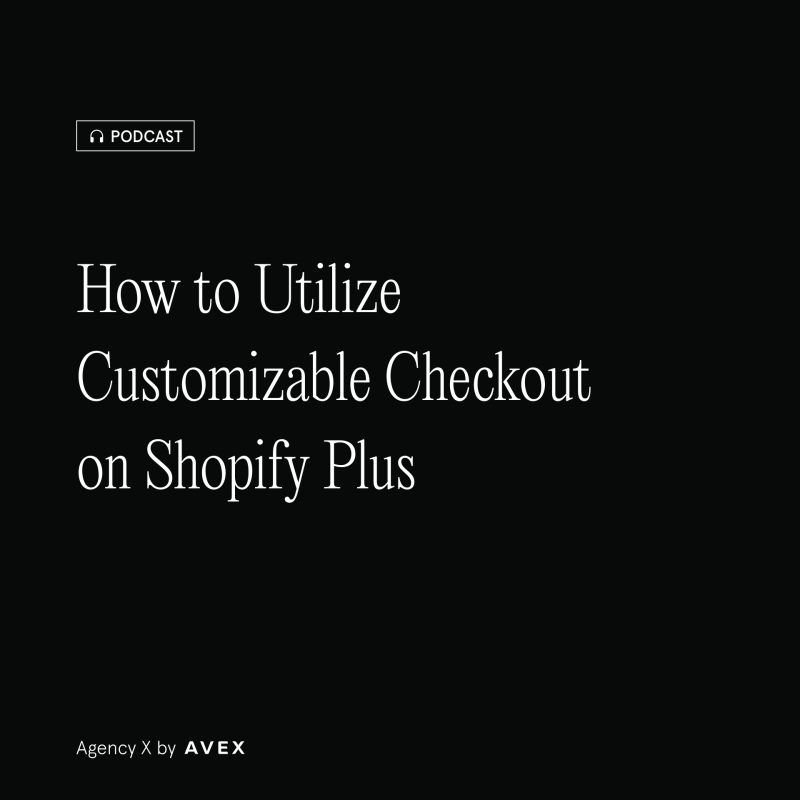Fool-proofing Your eCommerce Checkout Experience!

Quick Summary Reduce eCommerce cart abandonment and save two-thirds of your online transactions by building your storefront's checkout pages on the foundations of flexibility, security, support, trust, and functionality.
Nurturing prospective shoppers with a unique, brand-enriched customer journey is crucial for boosting online sales. While numerous strategies attract customers at the top of an eCommerce sales funnel, a brand's main success metrics lie in its ability to move those customers down the sales funnel and into a conversion funnel.
Now that we're talking conversions, it's common sense to highlight the role of the checkout page - which for many customers is a deal breaker. In fact, Baymard Institute's 2022 research indicated that 69.99% of eCommerce shopping carts are abandoned. In other words, out of 100 customers that add items to carts, only 30 of them convert, leaving a considerable chunk of revenue at stake.
In theory, most of today's online merchants are aware of the importance of building their checkout pages on the foundations of flexibility, security, support, trust, and functionality. However, in reality, many still lose two-thirds of their business by failing to cohesively hold those building foundations in a customer-centric experience - resulting in reduced checkout engagement and conversion rates and heightened cart abandonment rates.
What is cart abandonment? What causes it? And how can it be optimized?
What is Cart Abandonment Rate:
Cart Abandonment Rate is one of the most important eCommerce metrics that allows merchants to understand the performance of their checkout page. By analyzing the correlation between initiated eCommerce sales and successfully completed transactions, an eCommerce business can evaluate the friction stopping customers from checking out.
That said, calculating the cart abandonment rate is a great starting point to measure the effectiveness of a checkout page. However, digging deeper into the numbers and the factors resulting in them goes a long way toward optimizing revenue.
Why are customers abandoning their carts?
Understanding the reasoning behind why your customers are abandoning their carts can provide valuable insights as to which areas you should be funneling your checkout optimization efforts into.
As per the same Baymard 2022 Cart Abandonment Study, these are the reasons customers are not finalizing their transactions on eCommerce checkout pages:
48% Extra costs including shipping, taxes, and extra fees are too high
24% I have to create an account
22% Delivery was too slow
18% I didn't trust the site with my credit card information
17% Too long/complicated checkout process
16% I couldn't see/calculate the total order cost upfront
13% Websites had errors/crashed
12% Returns policy wasn't satisfactory
9% There weren't enough payment methods
4% The credit card was declined
Elements of a Great eCommerce Checkout Page:
From a high level, customers are looking for fast and easy checkout processes with as few steps as possible. Responsive and on-brand design is an expectation that, if not met, will have your potential customers turn their back on your store. Trust is also crucial.
Include a guest checkout option:
While having customers check out by creating an account certainly has its benefits, particularly for collecting zero-party data, saving order history, remarketing, and establishing cart abandonment retention campaigns, the approach might discourage customers and add extra steps to the checkout process, making it lengthier and increasing the risk of abandonment, particularly among the store's first-time visitors.
Opting to include a guest checkout option can negate the risk of cart abandonment caused by lengthy checkout processes and also capture impulse buyers and those who prefer to have a lower commitment to a brand.
Display Trust Badges throughout the process:
Yes, today's customers are more willing to shop online. But, many continue to feel uneasy about sharing their payment information with eCommerce sites. As a matter of fact, Baymard's recent Checkout Usability study indicated that 18% of users have abandoned a checkout flow during the last 3 months because they "didn't trust the site with their credit card information." This is found particularly prevalent among consumers shopping from smaller, newer, and more niche brands.
As a counteraction, brands are resorting to "site seals" and visual on-page icons and trust badges, such as SSL and other third-party security validation similar to Norton, McAfee, and GeoTrust, to communicate trustworthiness and increase the user's perceived sense of security.
In its recent editions, Shopify introduced the "Shop Promise" Badge for merchants to communicate reliable, fast delivery. While this also feeds into our next point, "Communicate reliable delivery dates," the Shop Promise badge acts as a form of reassurance and helps customers check out with more confidence - ultimately increasing the store's conversions by up to 25%.
Communicate reliable delivery dates:
For many, if not most, online customers, the timeframe when their order can be shipped and delivered can be the make-or-break factor between a conversion or an abandoned cart. In today's eCommerce landscape, online shoppers are increasingly demanding not just affordable shipping rates, but also faster options.
Since delivery dates are a direct purchase decision factor, they should be communicated early and often. This gives customers a sense of reliability and confidence. Even during the busiest times of the year, brands have to optimize their shipping capabilities to the best of their abilities, or else they'll lose their high-intent customers to the competition.
That's not all. Shipping fees and extra costs should be communicated early on. It's not uncommon for customers to find a product they like, at a price point that appeals to them, add it to their cart, and be surprised by shipping costs that make them question their purchase altogether. That said, how you charge customers for shipping and when you communicate those charges are crucial components of your shipping strategy that directly influence both your conversion rate and profit margins.
Flat-rate shipping and even free shipping are becoming more of an integral practice in the online space when it comes to conversion optimization, as is giving customers options when it comes to the choice of carrier, delivery time, and even fulfillment method, including options like local delivery and curbside pickup.
Options, options, and more options:
Just like the delivery and fulfillment options mentioned above, providing payment options at checkout is found to have a direct and positive impact on conversions. Visa, Mastercard, Apple Pay, and PayPal are some of the many loved and trusted payment options for customers. However, preference may vary depending on the demographics of your target customers. This is particularly true if you are selling cross-border. Your overseas customers may still prefer to pay cash-on-delivery, use buy-now-pay-later options, or use local payment partners.
At Avex, we have seen many of our leading clients achieve success by integrating Klarna on their checkout page. Klarna offers better shopping with direct payments, pay-later options, and installment plans in a smooth one-click purchase experience. The reduced initial commitment, or upfront payment, has had a positive impact on increasing the conversion rate.
All in all, setting up and designing a brand's checkout page is not a one-and-done activity; eCommerce brands should continuously A/B test and optimize different elements of the page, including the placement of CTAs, multi-page checkout vs. single page, the placement of messaging and options, shipping rates, etc. Heatmaps should also be analyzed to better understand how your users are interacting with different page elements.
Increase checkout conversions by +35% by addressing checkout usability issues.
At Avex, we partner with PrettyDamnQuick, a solution that powers perfect customer delivery experiences for Shopify's fastest-growing DTC brands by seamlessly integrating multiple delivery services and checkout delivery options.
The PrettyDamnQuick platform personalizes the checkout experience for customers with automation and even enables A/B testing to see which pricing, shipping options, or carrier combination converts the most sales for every brand. PrettyDamnQuick also makes delivery easy and more profitable by speeding up fulfillment, ensuring every order arrives on time, and allowing brands to leverage more shipping options at the lowest available cost.
In conclusion, optimizing your eCommerce checkout experience is an ongoing process that requires attention to detail and constant improvement. By addressing customer concerns, providing a seamless and trustworthy checkout process, and offering a variety of options for payment and delivery, you can significantly reduce cart abandonment rates and increase conversions. Don't underestimate the power of a well-designed, user-friendly checkout experience – it can make all the difference in your eCommerce success.



